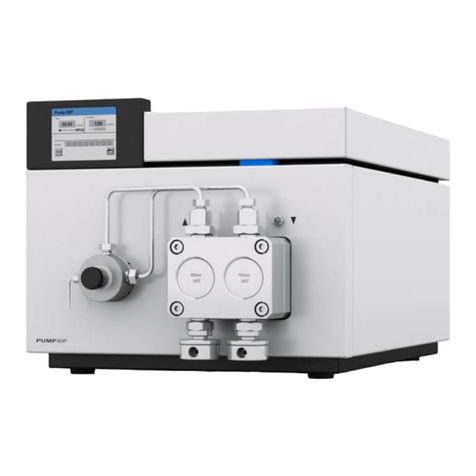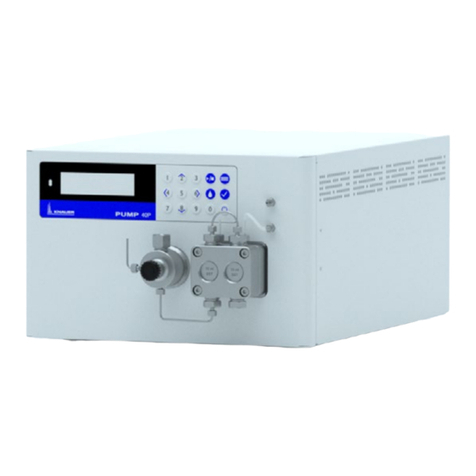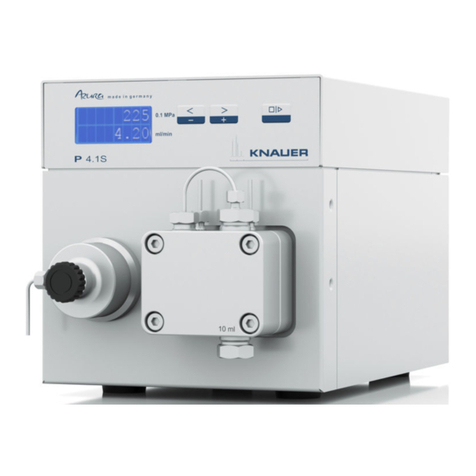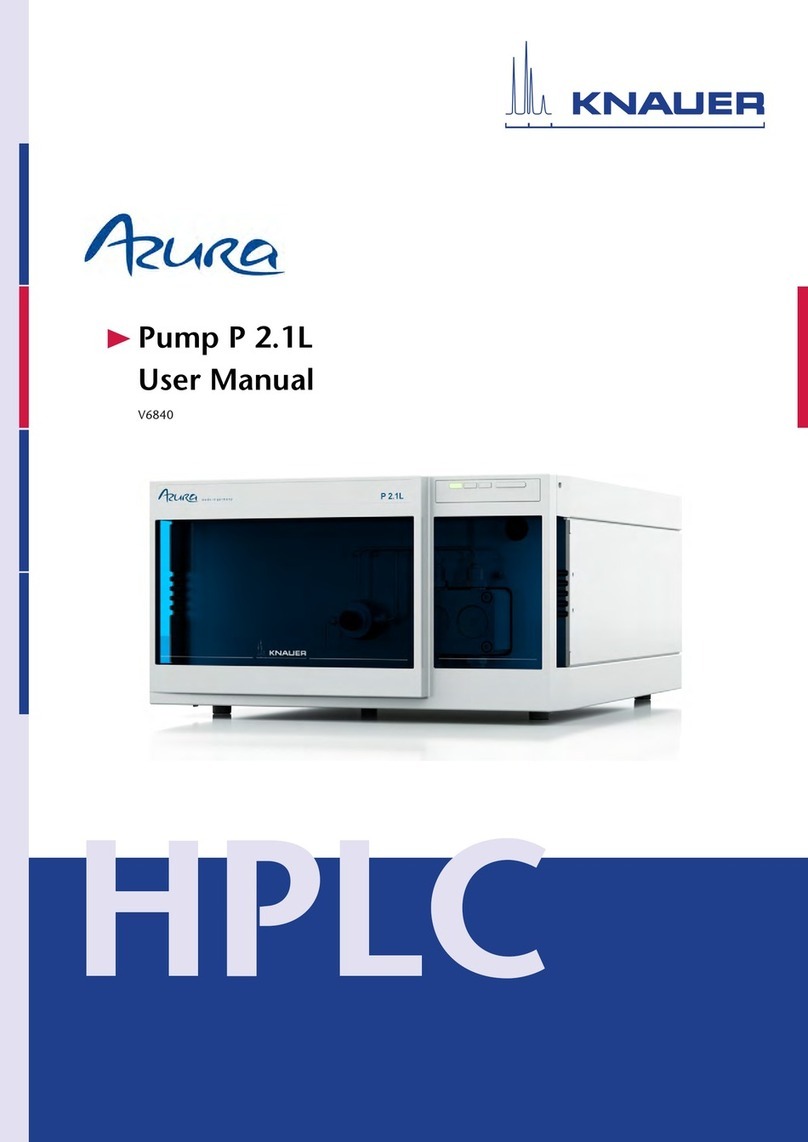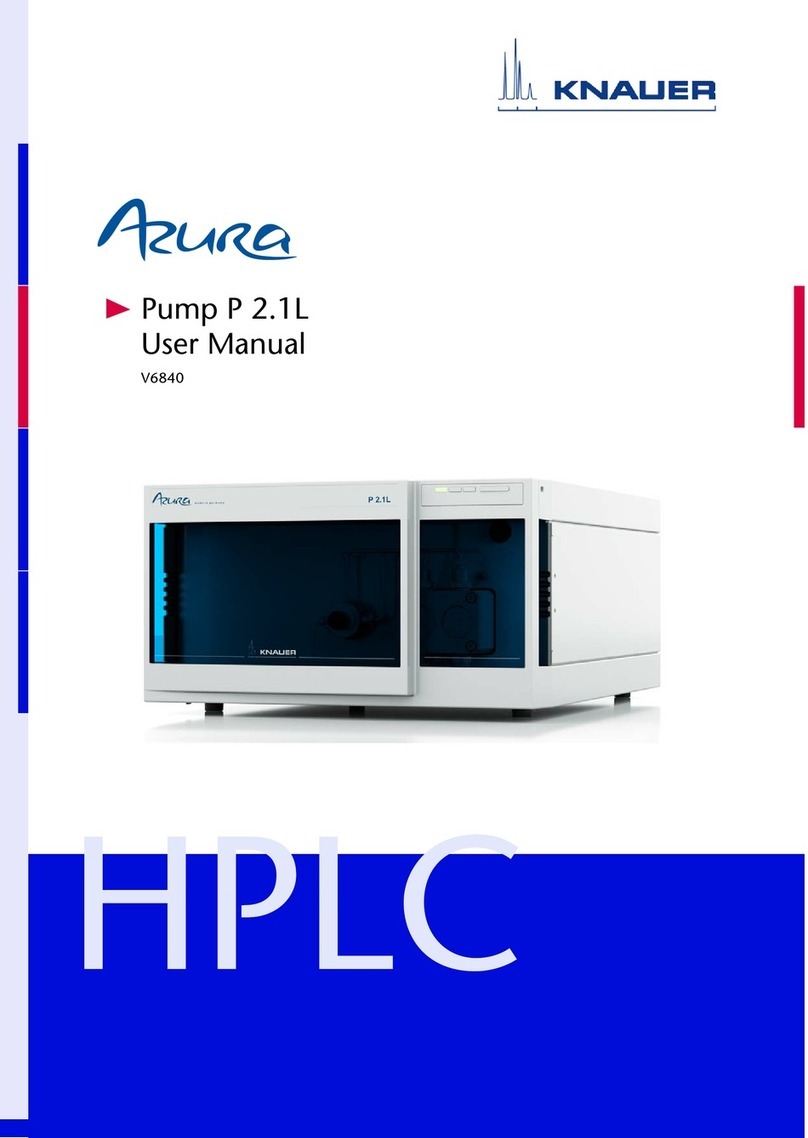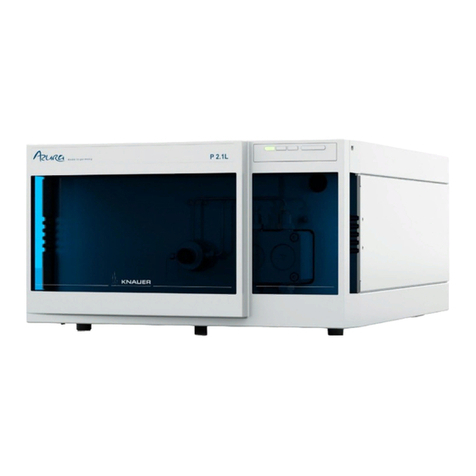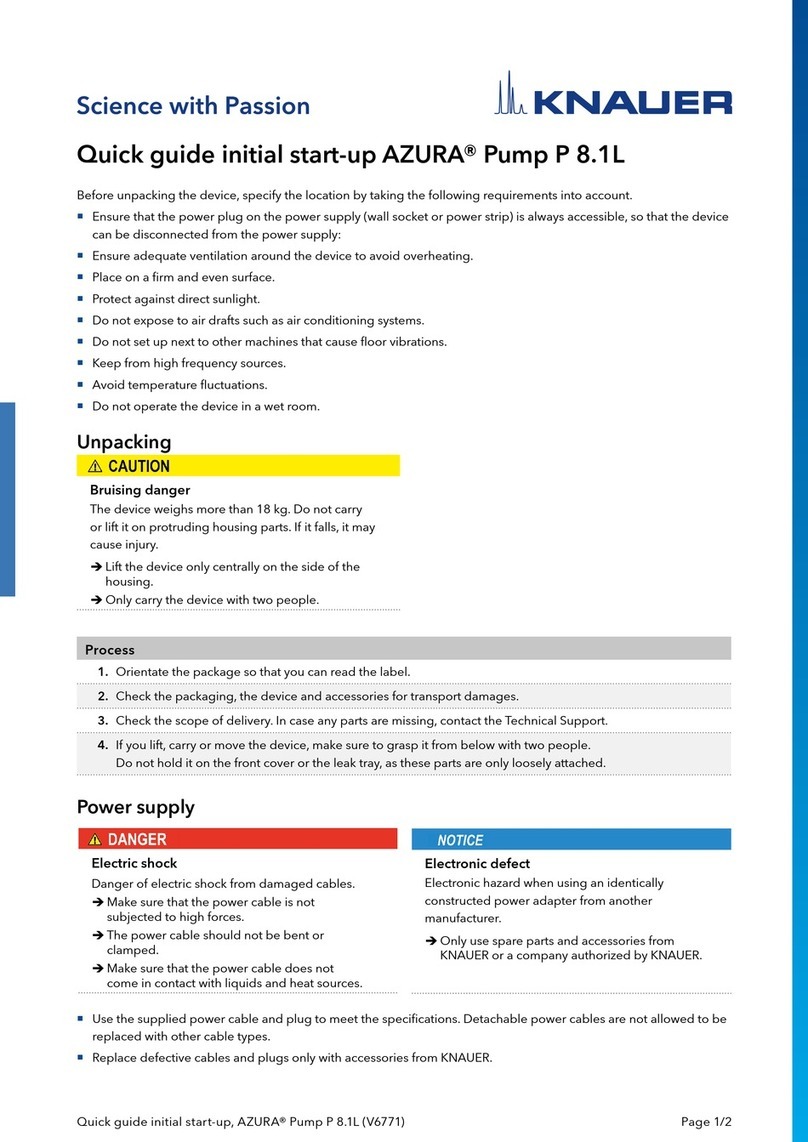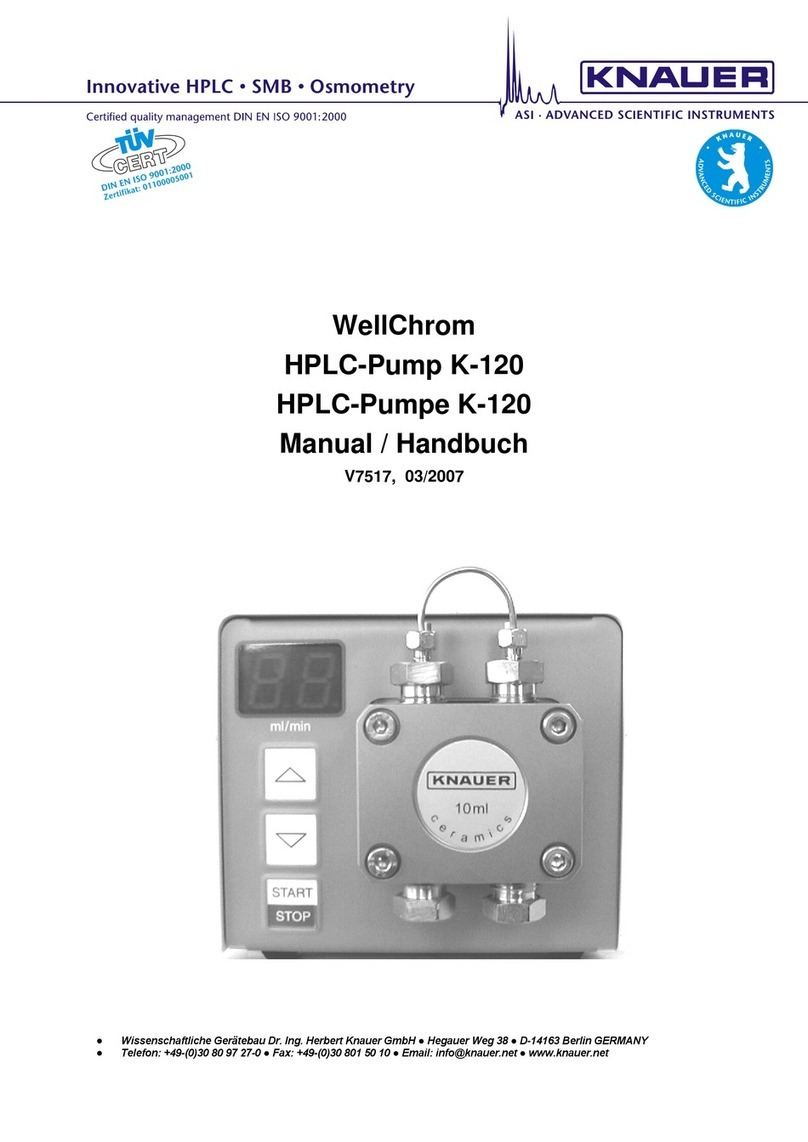
AZURA® Pump P 4.2S Instructions V6873
III
10. Technical data ..............................................................39
10.1 General ..........................................................39
10.2 Communication ...................................................39
10.3 Technical parameters...............................................40
10.4 Dimensions .......................................................40
11. Chemical compatibility of wetted materials .....................................41
11.1 General ..........................................................41
11.2 Plastics ...........................................................41
11.2.1 Polyetheretherketone (PEEK) .................................41
11.2.2 Polyethylene terephthalate (PET, outdated PETP) ................41
11.2.3 Polyimide (Vespel®) .........................................42
11.2.4 Ethylene-tetrafluorethylene copolymer (ETFC, Tefzel®) ...........42
11.2.5 Perfluorethylenpropylen-Copolymer (FEP),
Perfluoralkoxy-Polymer (PFA) .................................42
11.2.6 Polyoxymethylene (POM, POM-H-TF) ..........................42
11.2.7 Polyphenylene sulfide (PPS) ..................................42
11.2.8 Polytetrafluorethylene (PTFE, Teflon®) .........................42
11.2.9 Systec AF™ ................................................42
11.2.10 Polychlortrifluorethylene (PCTFE, Kel-F®) ......................42
11.2.11 Fluorinated rubber (FKM) ...................................43
11.2.12 Perfluorinated rubber (FFKM) ................................43
11.3 Non-metals .......................................................43
11.3.1 Diamond-like carbon (DLC)...................................43
11.3.2 Ceramic ..................................................43
11.3.3 Alumina (Al2O3).............................................43
11.3.4 Zirconium oxide (ZrO2)......................................43
11.3.5 Sapphire ..................................................43
11.3.6 Ruby ......................................................43
11.3.7 Mineral wool ...............................................43
11.3.8 Glass, glass fibre, quartz, quartz glass .........................44
11.4 Me t al s ............................................................44
11.4.1 Stainless steel ..............................................44
11.4.2 Hastelloy®-C ...............................................44
11.4.3 Titanium, titanium alloy (TiA16V4) .............................44
12. Repeat orders...............................................................45
12.1 Accessories ......................................................45
12.2 Available pump heads ..............................................46
13. Legal information ...........................................................47
13.1 Transport damage.................................................47
13.2 Warranty conditions................................................47
13.3 Declaration of conformity ...........................................47
14. Disposal....................................................................48
14.1 AVV-Marking Germany.............................................48
14.2 WEEE-Registration number .........................................48
14.3 Eluents and other operating materials ................................48
